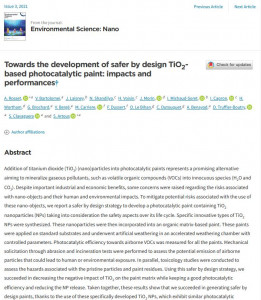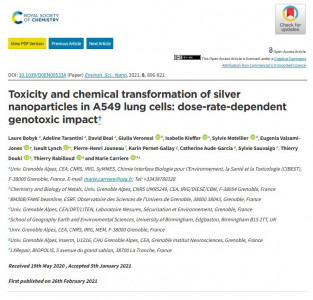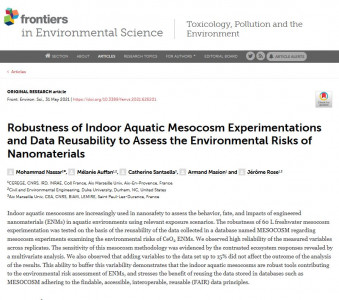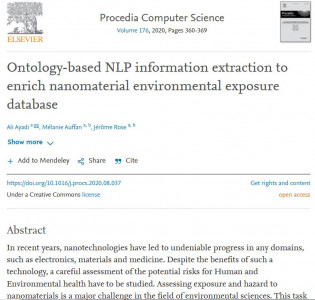Article on "Hydroxyl groups on cellulose nanocrystal surfaces form nucleation points for silver nanoparticles of varying shapes and sizes" Musino, D., Rivard, C., Landrot, G., Novales, B., Rabilloud, T., & Capron, I. (2021).
Abstract:
In this study, we investigate the interactions between the cellulose surface and Ag nanoparticles (AgNPs) for the purpose of manufacturing hybrid nanomaterials using bacterial cellulose nanocrystals (BCNs) as a model substrate. We focus on the role of the BCN surface chemistry on the AgNP nucleation obtained by chemical reduction of Ag+ ions. Homogeneous hybrid suspensions of BCN/AgNP are produced, regardless of whether the BCNs are quasi-neutral, negatively (TBCNs) or positively charged (ABCNs). The characterization of BCN/AgNP hybrids identifies the –OH surface groups as nucleation points for AgNPs, of about 20 nm revealing that surface charges only improve the accessibility to OH groups. X-ray Absorption technics (XANES and EXAFS) revealed a high metallic Ag0 content ranging from 88% to 97%. Moreover, the grafting of hydrophobic molecules on a BCN surface (HBCNs) does not prevent AgNP nucleation, illustrating the versatility of our method and the possibility to obtain bifunctional NPs. A H2O2 redox post-treatment on the hybrid induces an increase in AgNPs size, up to 90 nm as well as a shape variation (i.e., triangular). In contrast, H2O2 induces no size/shape variation for aggregated hybrids, emphasizing that the accessibility to –OH groups ensures the nucleation of bigger Ag nano-objects.









